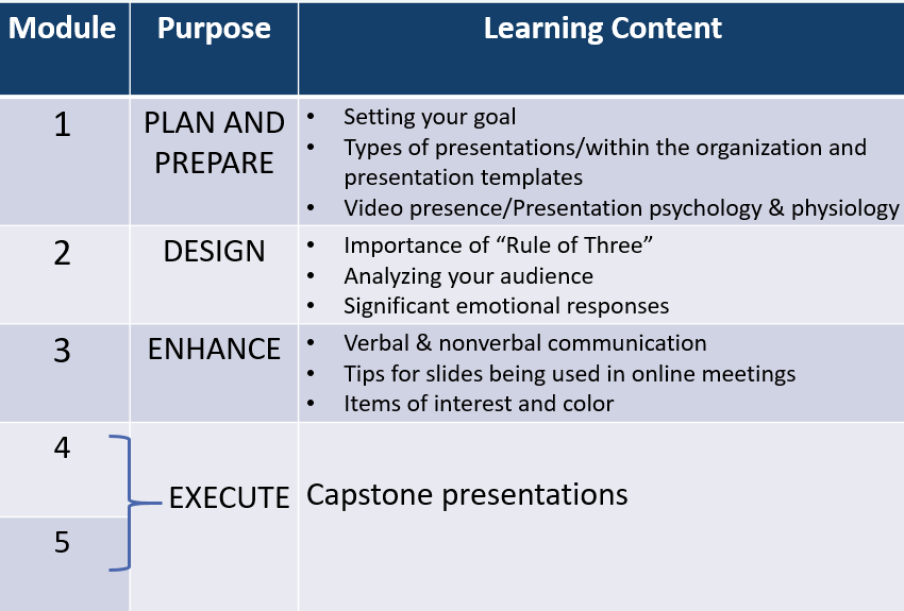LEADERSHIP TRAINING PROGRAMS
Development Business foundation
Leadership in your company influences the success of every employee. Leaders can make a difference in their company by providing professional development initiatives to engage employees in customized training and development. KEYGroup® has leadership skill assessment tools and training for every type of organization needing leadership training and nationwide. We offer numerous customizable systems that will meet your needs. For over 30 years, clients have chosen our executive coaching consultants because we deliver results in areas of an organization that need to be refocused. Leadership Development Business foundation
Below is a list of training programs that KEYGroup offers:
- Managing Multiple Generations in the Workplace
- Corporate Team Building
- Resolve Conflict Constructively
- Performance Management
- Motivating and Retaining Your Top Talent
- The Five Behaviors of a Cohesive Team™ Is a Proven Method
- Communicating Artfully Eliminates Duplicated Work
- Presentation Skills Workshop Teaches How to Present with Impact
Click HERE to see how we can help you.
Managing Multiple Generations in the Workplace
Conflict in the workplace? Losing talent because of a lack of promotional opportunities? Generational stereotypes obstructing communication and productivity? You’re not alone.
Today’s workforce is more diverse than ever, combining four generations with distinctly different values, attitudes, and work expectations.
So, if age doesn’t pop into your head when you hear the phrase “diversity in the workplace,” then you better start thinking about how different generations in your workplace affect productivity.
Why should I care?
As you know, managing multiple generations is challenging. But not managing them properly is a sure-fire way to bring your company’s progress to a screeching halt. Do you really want to deal with misunderstood communication and the mistakes it breeds? Do you want to lose valuable input from talented employees? How do you feel about high-volume turnover?
Those employees newer to the workplace often feel that leaders focus on their lack of experience and don’t appreciate their efforts, while more mature generations can feel that newer employees lack respect and a traditional work ethic. Though the values and attitudes of each group can vary greatly, you don’t want to promote misconceptions, biases, and inherent conflict. If you aren’t putting any effort into finding and working with the unique strengths of each generation, you’re missing out.
What can I do?
In the past, generation differences were easily sorted out by a traditional hierarchy. Today, organizations are flatter and employees work in teams. People are looking for the right kind of environment, where leaders engage them instead of using “command and control” leadership.
Our Managing Multiple Generations in the Workplace leadership training workshop helps teams identify generation gaps in your workplace while capitalizing on generational differences and similarities. By better understanding these fundamental differences, you’ll achieve maximum cooperation and productivity while retaining talented employees from all generations.
What will I gain?
Leadership training workshop participants identify the needs and motivations of different generations in your workplace to better understand the dynamic between each group. They’ll also learn to use leadership skills to create and sustain a culture that not only brings people of all ages into your workplace, but keeps them there. Among other things, you’ll:
- Learn how negative stereotypes can limit innovation
- Find out what causes newer employees to job-hop
- Debunk common misperceptions of each generation
- Get to the bottom of generational conflict – and use immediately applicable techniques to channel conflict into business solutions
Create vibrant entrepreneurial leaders from all generations throughout your company
Click HERE to see how we can help you.
Corporate Team Building
Today’s society is grounded in individual achievement. While this mindset has empowered many people to do great things, it ignores a fundamental life skill: how to work well with others. The result? Detrimental effects in the workplace, like duplicated efforts, miscommunication, conflict, and errors.
But effective teams promote a diversity of perspectives and ideas, generating creative momentum. They develop creative solutions to complex problems and discover innovative approaches. Teamwork facilitates effective communication and creates synergy, where energy and ideas between people tap the creative resources of the entire group. So the answer is to make employees work in teams, right?
Not exactly. Building teamwork is a process that takes time and removes individuals from the traditional hierarchical structures, pulling them out of their comfort zone. Just because you organize workers into teams doesn’t mean they will truly be working together. They can – you just have to show them how.
That’s why we offer our leadership training team building seminar:
Recognizing the Value of the Team Approach
- What Makes a Team? Arranging for employees to work on a project together does NOT constitute a team. Participants learn how teams work – and how being part of a team benefits each individual.
- Team Building Your employees explore what it takes to form a cohesive, effective team with synergy. Participants learn to work together and promote collaboration, with each person contributing his or her best resources and inspiring fellow team members as well.
- Problem Solving: Teamwork in Action Team members engage in a fun logic problem that inspires and requires teamwork. The Zin Obeliskchallenge is a memorable activity that will not only have your employees working together, but laughing and enjoying themselves in the process.
Pinpointing Your Mission and Goals
- Get Everyone on the Same Page When a great team comes together, great things can happen. But without concise direction and a clear sense of purpose, your team will end up on different pages, leaving room for miscommunication, conflict, and low-level productivity.
- Set Great Goals Ambition isn’t what makes a goal great. Once your team understands their mission, they can create goals that drive innovative solutions in a timely, effective manner. Learn the six criteria that turn your existing (and future!) goals into ones that motivate the team.
Defining Roles and Responsibility
- Learning to Lead Teams Effective team leaders are one of the most important parts of successful teams. Team leaders provide structure and direction for team members, holding them together and guiding them through every step of the project. Without good leadership, teams can become distracted from goals and lose that priceless sense of togetherness.
- Exploring Roles within the Team Participants engage in an interactive exercise that allows them to understand roles that promote and block effectiveness. This activity helps team members to identify which roles their strengths and weaknesses align with to better understand how each person can contribute to the team.
- Skill Practice: Facilitating a Team Meeting Effective communication skills are essential to good teamwork. In this activity, participants interact with each other in a team meeting with clear goals and expected outcomes to hone their ability to hold productive discussions and make collaborative decisions. Afterwards, the team evaluates the meeting to learn what works – and what doesn’t.
Solving Problems and Seizing Opportunities
- Learning by Doing Your team will explore different techniques that facilitate problem solving in this leadership training session. Participants learn how to use tools like brainstorming, storyboarding, mind mapping, and nominal group technique to flesh out innovative solutions.
Click HERE to see how we can help you.
Resolve Conflict Constructively
Let’s face it; conflict in the workplace is inevitable. Whether scarce resources, unrealistic expectations, or differences in values and interests are causing the problem, the results do nothing but hurt your organization. You know you need to confront the issue, but the idea of getting pulled into a feud between competing employees or blowing the whistle on underperformers can be very daunting.
Why should I care?
No matter how tempting the thought is, you can’t simply ignore things, hoping the problem will fix itself. Unresolved conflicts can cause decreased productivity, lowered morale, and dysfunctional
relationships in the workplace. On top of that, teamwork suffers and organizational goals fail to be met.
On the other hand, you may be wasting precious time and burning yourself out babysitting warring employees in an attempt to keep the situation from escalating out of control – with no guarantee that it won’t. And by now, the last thing you need is grievances and harassment situations.
What can I do?
If this sounds familiar, relax, you’re not alone. While conflict is a normal part of the workplace (and being human!), it doesn’t have to tear you apart on the job. That’s why we offer Resolving
Conflict Constructively, a workshop designed to give you the skills necessary to handle conflict in the workplace like a pro.
What will I gain?
When managed properly, conflict can actually contribute to team and organizational success. But it doesn’t happen overnight. The key is using effective communication and problem-solving
techniques to turn conflict situations into creative opportunities for growth.
Participants in the leadership training conflict workshop leave with the ability to resolve conflict situations that arise on their teams. Turning a lose-lose conflict into a win-win resolution not only resolves the existing issue, but prevents new ones by opening strong lines of communication. You’ll also reap the benefits of increased productivity, improved synergy, and more effective results.
Defining Conflict
- Identifying the Elements of Conflict Much like military and political conflicts, interpersonal conflict can be broken down and analyzed. Participants of this leadership training identify and learn about the elements of interpersonal conflict.
- Using Guidelines to Handle Conflict Sadly, most of life doesn’t come with a set of rules. Not so for workplace conflict. Our guidelines give you boundaries and guidance for handling these sticky situations.
- Recognizing the Value of Conflict Conflict causes problems, true, but that doesn’t mean you can’t learn from the experience. Resolving conflict requires creative solutions, and the open communication and teamwork necessary for that are very good for your organization.
- Understanding the Win-Win Outcome Ending fights usually results in a winner and a loser, but this kind of “I won, you lost” attitude isn’t going to make things any better. Learn the value of a win-win outcome and how to get there.
Employing Different Styles to Resolve Conflict
- Identifying Individual Reactions to Conflict There are five different modes people fall into when dealing with conflict. This exercise lets you take an honest look at how you react to conflict.
- Exploring Differing Conflict Management Styles By learning about the different ways people manage conflict, you’ll be better able to resolve the issue at hand.
- Understanding the Strengths and Weaknesses of Your Style By better understanding your reaction style, you can play to your advantages and work to improve your weaknesses.
Managing Conflict in Teams
- Arbitrating Team Conflict Ending conflict doesn’t mean that the manager makes a unilateral decision and the employees grudgingly obey. Learn how to work through the conflict with your team to reach an agreement that not only ends the conflict, but involves everyone.
- Dealing with Difficult People Even if most of your employees work to mend the problem, there’s always the chance that at least one person just won’t give in, no matter how hard you try. Our tips teach you what to do in sticky situations so that the bad apples don’t ruin it for everyone else.
- Recognizing When Others Don’t Want to Cooperate Learn to spot a lost cause when you see one, so that you don’t waste your time on an employee whose prerogative is to keep those walls up.
Applying Conflict Management Strategies and Styles
- Practice Makes Perfect This activity gives you three specific situations. Each situation has five reactions, representing each of the aforementioned styles. Participants of this leadership training individually rank and identify each reaction then compare their answers as a group to practice what they’ve learned
Click HERE to see how we can help you.
Performance Management
Let’s face it…traditional employee performance reviews don’t work.
Unfortunately, too many managers view them as a necessary evil—an interruption in an already too busy routine. It often becomes a once-a-year, check-the-box activity, rather than a summary of the coaching and feedback discussions that should have occurred throughout the year.
How Should Performance Reviews Work?
Done properly, performance reviews allow you to develop your existing workforce, shape the culture of your organization, and get more things done. Good reviews include:
- Sincere focus on developing the person being reviewed
- Two-way dialogue
- Discussion of talents and skills along with development areas
- Action planning for goal achievement, both organizationally and personally
- Powerful yet simplistic system that is easy to use
You, Too, Can Be A Better Manager!
By using KEYGroup’s systematic approach, effective leaders clarify their expectations and motivate employees to achieve optimal performance levels. Using this approach is also an excellent way to support talented employees and cultivate future leadership.
What will I gain?
Implementing a performance management system lets you:
- Get to know your employees better—their motivators, their focus, and their vision for the organization and their own future.
- Receive valuable insights on what’s going on in an employee’s corner of the company.
- Elevate communication to an art form.
- Set expectations and measures for employee performance.
- Give constructive feedback that helps employees to become more efficient.
- Increase organizational productivity.
- Use the opportunity to acknowledge employees’ contributions and strengths.
- “Set the bar” higher every six months to every year . . . creating a natural structure for employee growth.
- Retain precious human capital.
Click HERE to see how we can help you.
Motivating and Retaining Your Top Talent
With the anticipated upswing in the economy and impending war for talent, leaders will be once again challenged to attract and retain the best and the brightest employees. Many organizational leaders are defining new, flexible ways to help their companies stand out as “cool” workplaces – those that attract and keep these high-performing contributors. In this session, Dr. Ferri-Reed will provide you with thought-provoking and practical guidance for:
- Leveraging your unique leadership capabilities for retention;
- Fully engaging your employees; and
- Building and maintaining a culture that keeps your keepers.
This leadership training session will help you to keep the talent you want to keep by unlocking the leader within you, your staff and your organization.
Click HERE to see how we can help you
The Five Behaviors of a Cohesive Team™ Is a Proven Method
As one of the most popular programs used around the world, The Five Behaviors of a Cohesive Team has the goal of helping people discover what it takes to build a cohesive team. We are pleased to offer this state-of-the-art program, which helps individuals understand themselves as professionals and how they impact a team.
The program measures how teams work together within the fields of trust, conflict, commitment, accountability, and results. The five behaviors of a cohesive team were created by Patrick Lencioni and apply to every field of business. Our Five Behaviors program includes the following factors like:
- Trusting One Another to Admit Mistakes, Lean on Each Other, and Ask for Help
- Knowing Coworkers Encourage Support and Improvement
- Having Health Conflict that Is Accepting and Welcoming
- Committing to Decisions Made Because All Opinions are Heard
- Holding One Another Accountable
Click HERE to see how we can help you
Communicating Artfully Eliminates Duplicated Work
Is your workplace plagued by duplicated work efforts? Does frequent misinterpretation lead to conflict among your employees? Are you losing sales and support for your initiatives? If so, it sounds like your workplace is suffering from poor communication.
Even if you don’t recognize the signs of poor communication in your workplace, our leadership training workshop on communication will benefit your organization. Good communication facilitates increased sales and productivity, effective and efficient management, and a well-coordinated workflow. And when your employees aren’t held back by the barriers of poor communication, your organization flourishes.
Poor communication leads to errors and missed opportunities, which never advance organizational success. So what can you do? A lot, actually. Stellar communication skills can be learned, and we can help. That’s why we offer Communicating Your BEST, a one-day workshop that teaches the specific skills and techniques necessary for leadership training and effective communication.
Understanding Communication Styles
- Analyzing Your Style Find out which of the four basic types your communication style falls under by taking the B.E.S.T. survey.
- Understanding Differences in Communication Styles Explore the four basic types of communication styles to learn how each style functions and how to communicate effectively with each type.
- Exploring the Assets and Liabilities of Your Style … the good, the bad, and the ugly. When you have a thorough understanding of how you communicate, you can work your strengths to their best advantage and improve on your weaknesses.
- Realizing the Value of Differing Styles No style is right or wrong, and this activity allows you to identify the value each style brings to the organization.
Learning to Influence Others
- Understanding the Elements of Influencing Learn the five key elements of persuasive communication that put your listeners on the edge of their seats.
- Analyzing Your Listeners When you understand where your listeners are coming from, you’ll know exactly how to get to them. Your message will be hitting home in no time with our tips for analyzing your audience.
- Recognizing “Hot Buttons” Playing to what makes your listeners tick is the best way to grab their attention – something you can’t afford to lose. This activity hones your ability to flesh out “hot buttons” and use them to reel your listeners in.
Click HERE to see how we can help you.
Master the Art of Delivering Virtual Presentations To Secure Results
Are you "ZOOMED OUT"? Well, you are not alone, and it only stands to get worse. A recent study in the Harvard Business Review mentioned that 70% of respondents anticipate using video conferencing the same amount as today or more, even after social distancing guidelines are lifted!
If you are struggling with the backlash of online communication, you are probably most concerned about:
- Getting new sales
- Keeping the loyal customers that you have worked hard to get
- Staying in contact with key accounts
- Keeping your attendees engaged during your presentations
- Delivering persuasive online presentations especially when you need to present technical data
How a presentation is delivered is paramount to achieve desired results. And now is the time to invest in learning how onlind presentations can be engaging.
KEYGroup facilitators are experts at helping clients create and deliver persuasive engaging presentations, offers a tried-and-true online presentation skills class...via Zoom, or course. This professional development session is customized to meet specific needs of attendees, whether they be in sales, marketing, leadership, technical or specific business divisions and uniquesly includes delivering to English as a Second Language (ESL) global participants.
Attendees will learn:
- Formats that work best for online presentations
- Keys to a professional video presence
- Enhancements to keep your audience actively engaged
- Persuasive techniques that will achieve your goal
Online presentations are and will be the new normal. Enhancing the look and delivery of your online presentations will help attendees learn new skills and gain the confidence they need to achieve the desired results, leaving your competitors in the dust.
Click HERE to see how we can help you.
Presenting With Impact
Ever sit through painful internal business meetings with dull presenters who run through 100s of text-laden slides? Wish that business managers would just get to the point and present with crispness and clarity? Cringe when you see your customers’ eyes gloss over when your company representatives make a pitch to them? KEYGroup®’s presentation skills program can help even the most reluctant presenter by recognizing and enhancing each individual’s inherent strengths and by teaching easy to apply techniques that pros use regularly. The seminar includes:
- A proven persuasive model that fits any business circumstance
- Skills to gain…and keep…audience attention
- How to field tough questions diplomatically
- Tips for presenting with skill and grace
Participant Comments:
“I didn’t realize how much of an information overload I was giving my customers. This class really helped me to get to the point with clarity and brevity.”
“The improvement throughout the course, evidenced through video feedback, was astounding. One of the best professional development programs I have ever attended.”
“This class really helped me to focus on my customer and win more sales.”
“I was really skeptical before coming into this class because our company presentations are highly technical. This class was, by far, the best that I have ever taken. It helped me to make my sales presentations much more impactful.”
Click HERE to see how we can help you.
Contact us today to schedule an appointment with us for leadership training or to learn more about any of our services. We proudly serve clients across the country.











